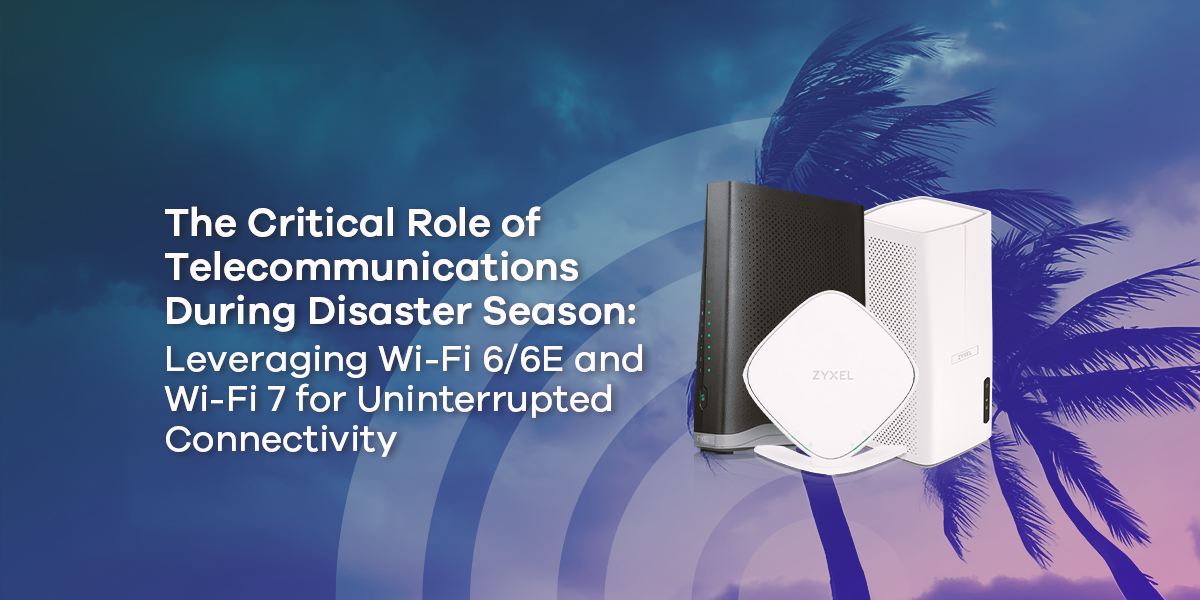
The Critical Role of Telecommunications During Disaster Season: Leveraging Wi-Fi 6/6E and Wi-Fi 7 for Uninterrupted Connectivity

As natural disasters become more frequent and severe like the recent hurricane Francine in Louisiana, the earthquake in Los Angeles, and the California wildfires the importance of telecommunications during disaster season cannot be overstated. From wildfires and hurricanes to earthquakes and floods, reliable and fast communication networks are essential to ensuring public safety, coordinating emergency response, and supporting recovery efforts. Telecommunications infrastructure is the backbone for communities and businesses, keeping them connected when it matters most.
Amidst these challenges, evolving Wi-Fi technologies—such as Wi-Fi 6/6E and the next-generation Wi-Fi 7—are critical tools that help maintain reliable connectivity, even under the strain of disaster. By integrating these solutions, service providers can offer faster speeds, increased capacity, and seamless transitions that ensure users remain connected when disaster strikes.
Wi-Fi plays a crucial role in ensuring that emergency services and the public can communicate effectively during disasters. Here are some specific examples:
- Emergency Alerts: Wi-Fi enables real-time alerts to smartphones, computers, and other connected devices like evacuation orders and updates.
- First Responder Coordination: Emergency teams use Wi-Fi to share critical data (maps, live video feeds, or medical information and improve response efficiency even in densely populated areas.
- Temporary Networks: Portable Wi-Fi hotspots restore communication when traditional networks fail, such as in hurricane-hit areas where they help quickly re-establish communication lines.
- Medical Support: Field hospitals rely on Wi-Fi for patient records and coordinated care during emergencies.
- Crowdsourced Information: Wi-Fi helps individuals share real-time disaster updates with authorities. Affected individuals upload photos, videos, and real-time information about conditions which can help emergency services pinpoint areas of need.
- Family Reunification: Wi-Fi allows families to stay connected and coordinate reunions during disasters.

The Power of WiFi 6/6E and WiFi 7
Wi-Fi 6/6E, for example, helps to alleviate network congestion in high-demand areas by utilizing additional spectrum, which becomes particularly crucial during emergencies. First responders and the public alike rely on these connections to access real-time information, coordinate response efforts, and maintain communication with loved ones. In regions affected by disasters, the ability of networks to maintain performance under pressure ensures essential information flows without disruption.
Similarly, Wi-Fi 7 takes connectivity a step further, preparing service providers for even more challenging environments. It offers the potential for seamless transitions between networks during partial outages or high traffic, further ensuring that crucial communications remain intact.
Staying Connected When It Matters Most
In times of crisis, staying connected isn't just important—it’s critical. With Zyxel’s next-generation Wi-Fi solutions, service providers can ensure that their customers are equipped with the fast, reliable, and resilient networks needed to weather any storm.
Discover how Zyxel's Wi-Fi 6/6E and Wi-Fi 7 solutions can keep you connected when it matters most.



